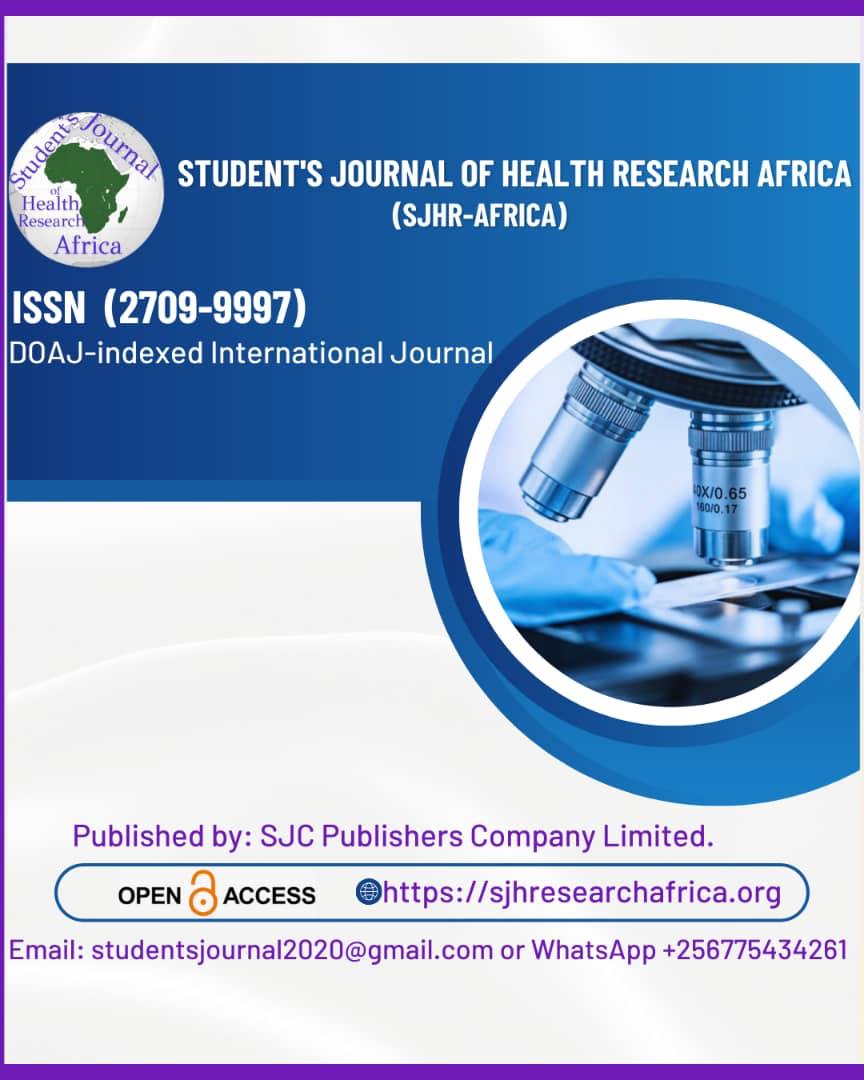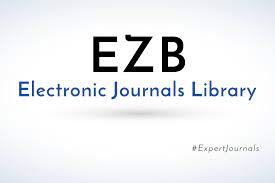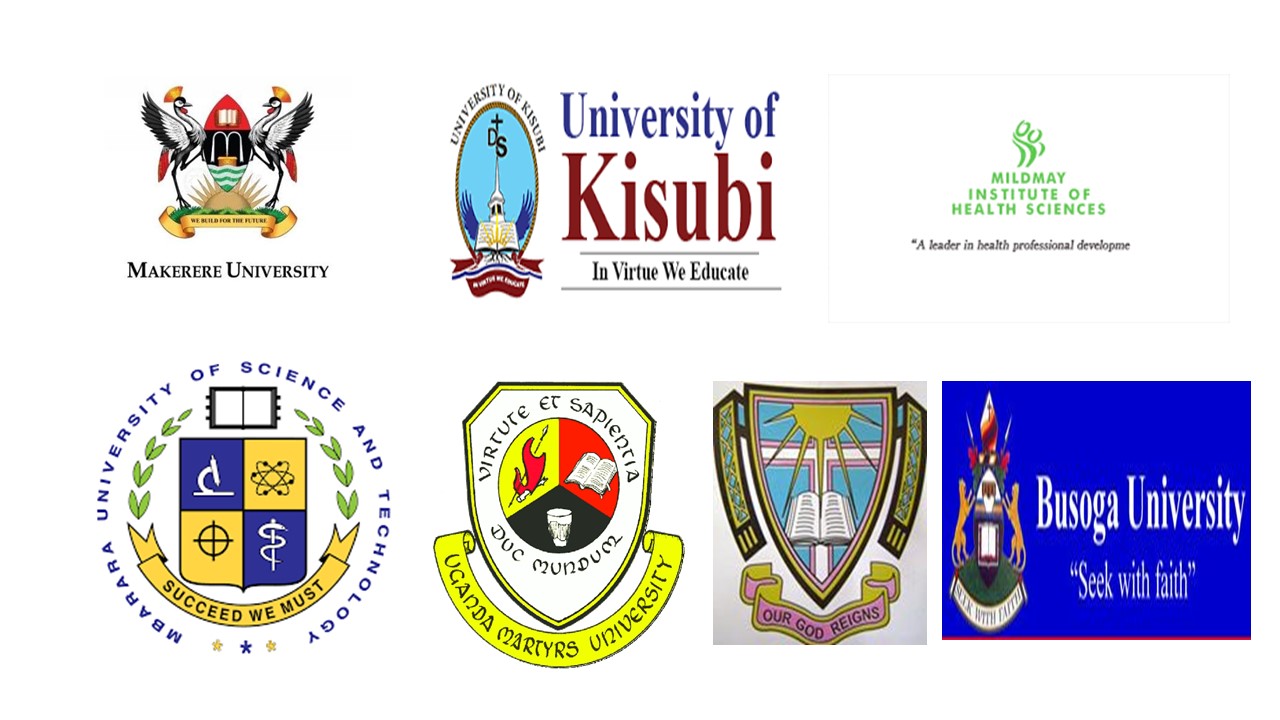Phytochemical Screening and Anti-bacterial Activity of Selected Medicinal Plants Used to Treat Skin Diseases in the Eastern Cape, South Africa.
DOI:
https://doi.org/10.51168/sjhrafrica.v6i6.1754Abstract
Skin infections are prevalent globally, with most cases being self-limiting and exhibiting low mortality rates. Approximately one-third of the population suffers from skin diseases, making them the fourth most common health issue worldwide. Despite their widespread nature, the significance of these infections is often underestimated. This study investigates the antibacterial properties of crude extracts from three medicinal plants: Aloe ferox, Tetradenia riparia, and Carpobrotus edulis, known for their traditional use against skin diseases. The extraction process involved using solvents such as petroleum ether, dichloromethane, ethyl acetate, and methanol from the dried leaves of these plants. The antibacterial activity was assessed through microdilution assays and disc-diffusion methods. The total phenolic content was found to range from 10.9 mg GAE/g DW to 30.4 mg GAE/g DW, while flavonoid levels varied between 5.5 CAE/g DW and 15.1 CAE/g DW. Minimum inhibitory concentrations (MIC) were recorded from 0.39 mg/mL to over 12.5 mg/mL, with inhibition zones measuring between 0 mm to 3 mm. Notably, methanol extracts demonstrated the highest antibacterial activity and total phenolic content compared to other solvents used. A significant correlation was identified between biological activity and total phenolic content. Among the tested bacteria, Staphylococcus aureus exhibited the highest resistance to the crude extracts. The findings suggest that A. ferox, T. riparia, and C. edulis are rich in phenolic compounds and hold potential as therapeutic agents for treating skin diseases.
Keywords: Medicinal plants, skin diseases, Aloe ferox, Tetradenia riparia and Carpobrotus edulis.
References
Babu, S.N. and Noor, A., 2020. Bioactive constituents of the genus Aloe and their potential therapeutic and pharmacological applications: A review. Journal of Applied Pharmaceutical Science, 10(11), pp.133-145.
Bazzicalupo, M., Cornara, L., Burlando, B., Cascini, A., Denaro, M., Smeriglio, A. and Trombetta, D., 2021. Carpobrotus edulis (L.) NE Br. extract as a skin preserving agent: From traditional medicine to scientific validation. Journal of Integrative Medicine, 19(6), pp.526-536.
Bittner Fialová, S., Rendeková, K., Mučaji, P., Nagy, M. and Slobodníková, L., 2021. Antibacterial activity of medicinal plants and their constituents in the context of skin and wound infections, considering European legislation and folk medicine—a review. International Journal of Molecular Sciences, 22(19), p.10746.
Coopoosamy, R.M. and Naidoo, K.K., 2011. Assessing the potential of Tetradenia riparia in treatment of common skin conditions in rural communities of South Africa. Afr. J. Microbiol. Res, 5(19), pp.2942-2945.
Finberg, M.J., Muntingh, G.L. and van Rensburg, C.E.J., 2015. A comparison of the leaf gel extracts of Aloe ferox and Aloe vera in the topical treatment of atopic dermatitis in Balb/c mice. Inflammopharmacology, 23, pp.337-341.
Gherbon, A., Frandes, M., Timar, R. and Nicula, M., 2021. Beneficial effects of Aloe ferox on lipid profile, blood pressure, and glycemic control in obese persons: A CONSORT-clinical study. Medicine, 100(50).
Hailemichael, Y., Novignon, J., Owusu, L., Okyere, D., Mtuy, T., Alemu, A.Y., Ocloo, E.K., Koka, E., Palmer, J., Walker, S.L. and Gadisa, E., 2024. The role of economic factors in shaping and constituting the household burden of neglected tropical diseases of the skin: Qualitative findings from Ghana and Ethiopia. Social Science & Medicine, 356, p.117094.
Htet, K.Z., Griffiths, C.E. and Lwin, S.M., 2023. Essential emergency skincare: a global health dermatology innovation for Myanmar and beyond. British Journal of Dermatology, 189(6), pp.760-763.
Hudzicki, J., 2009. Kirby-Bauer disk diffusion susceptibility test protocol. American society for microbiology, 15(1), pp.1-23.
Johari, M.A. and Khong, H.Y., 2019. Total phenolic content and antioxidant and antibacterial activities of Pereskia bleo. Advances in Pharmacological and Pharmaceutical Sciences, 2019(1), p.7428593.
Lucas, B.N., DALLA, N., Boeira, C.P., Verruck, S. and ROSA, C.S.D., 2022. Determination of total phenolic compounds in plant extracts via Folin-Ciocalteu’s method adapted to the usage of digital images. Food Science and Technology, 42, p.e35122.
Makkar, H.P.S., 1999. Quantification of tannins in Tree Foliage: A laboratory manual for the FAO/IAEA Co-ordinated project. Nuclear Techniques in Food and Agriculture, Animal Prod, And Health Sub-Programme. FAO.
Mashigo, M., Ngwira, K., Risenga, I. and Choene, M., 2024. Preliminary anticancer activity of Carpobrotus edulis (L.) Bolus exposed to low and high temperature conditions against cervical cancer. Journal of Herbmed Pharmacology, 13(4), pp.550-561.
Melo, N.I.D., Carvalho, C.E.D., Fracarolli, L., Cunha, W.R., Veneziani, R.C.S., Martins, C.H.G. and Crotti, A.E.M., 2015. Antimicrobial activity of the essential oil of Tetradenia riparia (Hochst.) Codd.(Lamiaceae) against cariogenic bacteria. Brazilian Journal of Microbiology, 46, pp.519-525.
Mphande, F.A., 2020. Skin Disorders in Vulnerable Populations: Causes, Impacts and Challenges. Springer Nature.
Nalimu, F., Oloro, J., Kahwa, I. and Ogwang, P.E., 2021. Review on the phytochemistry and toxicological profiles of Aloe vera and Aloe ferox. Future Journal of Pharmaceutical Sciences, 7, pp.1-21.
Ndamane, Z., Senekal, M. and De Villiers, A., 2013. Healthkick: risk factors for type 2 diabetes mellitus in primary school teachers. Unpublished Master’s thesis. University of Cape Town: cape Town.
Seth, D., Cheldize, K., Brown, D. and Freeman, E.E., 2017. Global burden of skin disease: inequities and innovations. Current dermatology reports, 6, pp.204-210.
Shimira, F., 2022. Tetradenia riparia, an ethnobotanical plant with diverse applications, from antimicrobial to anti-proliferative activity against cancerous cell lines: A systematic review. Journal of Herbal Medicine, p.100537.
Shraim, A.M., Ahmed, T.A., Rahman, M.M. and Hijji, Y.M., 2021. Determination of total flavonoid content by aluminum chloride assay: A critical evaluation. Lwt, 150, p.111932.
Viljoen, A., Chen, W., Mulaudzi, N. and Fouche, G., 2023. Aloe ferox. In The South African Herbal Pharmacopoeia (pp. 57-82). Academic Press.
Zeleke, B., Mekonnen, Z., Bireda, M., Yitbarek, M. and Dendir, A., 2024. Phytochemical screening and antimicrobial activity of Polygala sadebeckiana Gürke extracts on bacterial isolates from Wound samples of patients with “Shimetere”. BMC Complementary Medicine and Therapies, 24(1), p.72.
Zhang, X.J., Wang, A.P., Shi, T.Y., Zhang, J., Xu, H., Wang, D.Q. and Feng, L., 2019. The psychosocial adaptation of patients with skin disease: a scoping review. BMC public health, 19, pp.1-15.
Published
How to Cite
Issue
Section
License
Copyright (c) 2025 Ntombizanele Tshali, Karishma Singh , Roger Coopoosamy , Devashan Naidoo, Kuben Naidoo

This work is licensed under a Creative Commons Attribution-NonCommercial-NoDerivatives 4.0 International License.






















